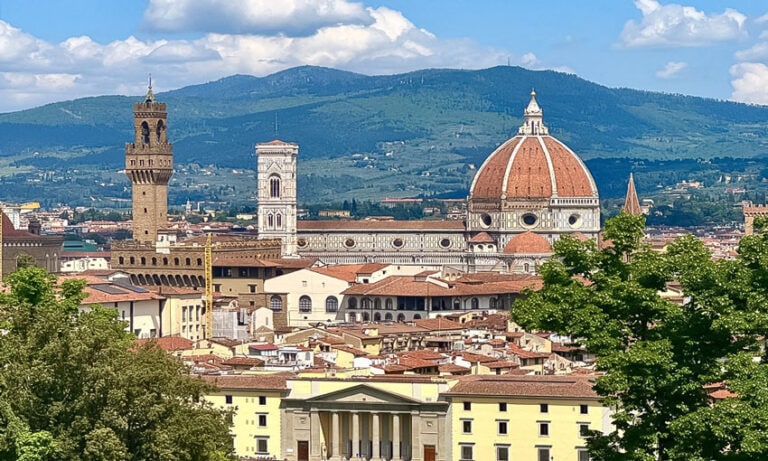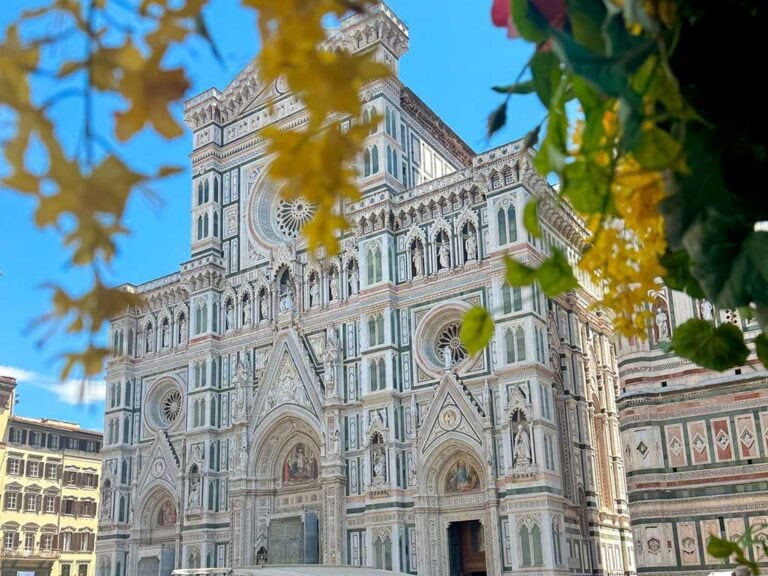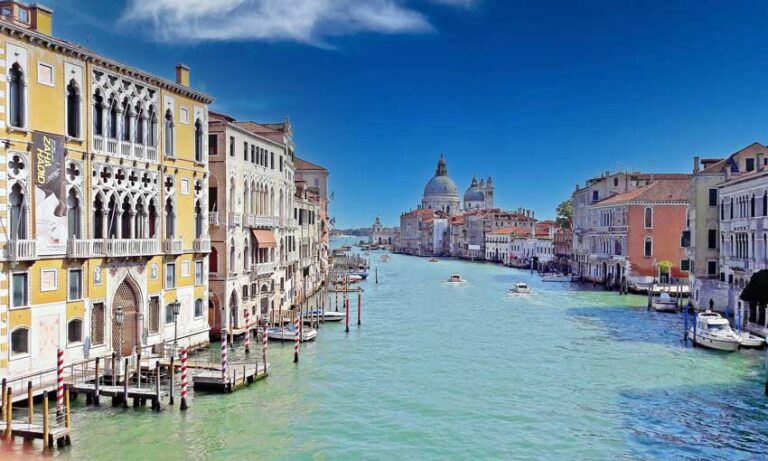If There’s One Place You Should See at Least Once, It’s Vatican City. You don’t need to be Catholic to feel moved here. You just need to be human.


Vatican City may be the smallest country in the world, but the feeling it gives you is anything but small.
Vatican City is one of those places that doesn’t feel real until you’re standing in it. It’s a tiny country inside Rome—with its own post office, its own guards, even its own time zone. But what matters most is what’s inside: the Sistine Chapel, St. Peter’s Basilica, and some of the most famous works of art in the world
How to Get to Vatican City and How to Enter
Getting to Vatican City is easy — it’s located right in the heart of Rome. You don’t need a special visa or passport stamp; just walk in like you would to any Roman neighborhood.
The easiest way to reach it is by metro. Take Line A (the orange line) and get off at Ottaviano – San Pietro. From there, it’s just a short walk to St. Peter’s Square.
There are no entry fees to walk into Vatican City or enjoy the square. But if you want to visit the Vatican Museums (home to the Sistine Chapel) or go inside St. Peter’s Basilica, it’s best to arrive early.
Vatican Museum Tickets: The Smartest Way to Book Your Visit
There are a few ways to buy tickets to the Vatican Museums — you can get them in person when you arrive, through the official Vatican website, or from trusted tour operators.
But honestly, booking online in advance is the best way to go. The lines at the entrance can get incredibly long, especially during busy seasons, and nobody wants to spend their day in a queue.
Booking ahead not only saves you time but also gives you the option to join early access or guided tours, which can make the whole experience even more special.
Some tours even include early morning entry before the public, giving you the rare chance to see the Sistine Chapel without the usual crowds — it’s quiet, almost sacred, and completely unforgettable.
There are also skip-the-line guided tours that combine the Vatican Museums, St. Peter’s Basilica, and even the Vatican Gardens, so you can make the most of your visit without missing a thing.
If it’s your first time visiting, a guided tour is a great way to learn the stories behind the art and architecture — and trust me, the more you understand, the more magical everything becomes. If you’re wondering, “is a Vatican tour worth it?” — for most travelers, the answer is yes.
Even though they’re both inside Vatican City, St. Peter’s Basilica and the Vatican Museums are separate. The basilica is completely free to enter — no ticket needed — but that doesn’t mean it’s quick. Lines to get in can stretch across St. Peter’s Square, especially later in the day.
If you want to avoid the wait, plan to arrive early in the morning or consider joining a guided tour that includes priority access. Once inside, the basilica is breathtaking.
What to Know Before You Go: Dress Code, Photo Rules & Chapel Etiquette
Before you step into the Vatican Museums or St. Peter’s Basilica, it’s important to know that you’re not just visiting a museum — you’re entering a sacred space.
Dress Code
Modest clothing is required. Shoulders and knees must be covered for both men and women. That means no sleeveless tops, short skirts, or shorts above the knee. Avoid ripped, sheer, or revealing clothing. If you’re unsure, bring a scarf or light jacket — it’s better to be safe than turned away at the door. The Vatican City dress code is strictly enforced, especially at religious sites.
Photography Rules
Photos are allowed in most areas of the Vatican Museums — but never with flash. In St. Peter’s Basilica, photography is allowed, but always be respectful and discreet.
In the Sistine Chapel, photography and video are completely forbidden. No exceptions. You’ll be asked to put your phone or camera away immediately, and guards actively monitor the space.
Ever wondered why photography isn’t allowed in the Sistine Chapel? Here’s the real reason behind the rule—and what you can (and can’t) do instead.
Silence & Behavior
When you enter the Sistine Chapel, silence is expected. This isn’t just about preserving a peaceful atmosphere — it’s about respecting the sacredness of the space. The chapel is still used for religious ceremonies, including the election of a pope. You’ll likely hear the guards whispering “Silenzio, please” or gently asking people to be quiet. Whispering, loud talking, or laughing is considered disrespectful.
These simple rules help preserve the experience for everyone — and trust me, the quiet moment you’ll have looking up at Michelangelo’s ceiling in complete stillness is something you’ll remember forever.
Free Entry on the Last Sunday of the Month
Here’s a little-known tip: The Vatican Museums are free to enter on the last Sunday of every month. It’s a great way to experience the art and history without spending a euro — but be prepared for crowds. Many people take advantage of the free admission, so lines can start early and move slowly.
If you don’t mind the wait and want to save money, it’s worth it. Just remember that the museums close earlier than usual on those days, and there are no guided tours or advance bookings.
Best Time to Visit the Vatican
If you want to avoid the crowds, the best time to visit the Vatican is early in the morning, right when it opens. This gives you the chance to explore the Vatican Museums and even the Sistine Chapel before they get packed with tour groups. Weekday mornings (especially Tuesday through Thursday) tend to be the quietest.
Afternoons, especially after 2 PM, can be a bit more relaxed in St. Peter’s Basilica, but by that time the museums may already be full and a bit overwhelming — especially in summer.
If you’re going during the high season (spring through early fall), book your tickets or tour in advance, no matter what time you go. And if you’re visiting on the last Sunday of the month, aim to arrive very early — it gets busy fast! These tips for visiting Vatican City can make all the difference.


Tour or No Tour? Here’s What to Consider
One of the most common questions people ask before planning how to visit Vatican City is: Should I book a guided tour, or explore on my own? The truth is — it depends on what kind of experience you want.
Go with a tour if…
It’s your first time at the Vatican
You want to skip the long entry lines
You’re curious about the history, stories, and symbolism behind the art
You want early access (some tours let you enter before opening time)
A good guide can turn what might just be a walk through galleries into something meaningful. You’ll understand what you’re looking at, and the visit will feel richer and more personal.
Go on your own if…
You like to move at your own pace
You’re on a tighter budget
You’ve already been once before
You enjoy discovering things independently, even without all the background
If you go solo, consider downloading an audio guide or doing a little research before you arrive. Either way, there’s no wrong choice — just what works best for you.
How to Choose a Good Vatican Tour
With so many Vatican tours out there, it’s easy to get overwhelmed. Here are a few tips to help you choose one that’s actually worth your time and money:
Check what’s included. A good tour should cover the Vatican Museums, the Sistine Chapel, and St. Peter’s Basilica. Some even include the Vatican Gardens or dome climb, but not all — so read the details carefully.
Look for skip-the-line access. This alone can save you hours, especially during high season.
Go with a licensed guide. Make sure the tour is run by certified guides or an officially recognized operator — their knowledge makes all the difference.
Read recent reviews. Look at reviews that are no more than a few months old. You’ll quickly see which guides are engaging, organized, and respectful of time
Booking through the official Vatican website or well-known platforms like GetYourGuide, Take Walks, or Context Travel is usually a safe bet.
Apps & Audio Guides That Help (Especially If You’re Going Without a Tour)
Exploring the Vatican on your own? Don’t worry — there are some excellent apps and audio guides that can give you deep insights without the cost of a live guide. Here are a few worth downloading before you go:
Rick Steves Audio Europe (Free)
This free app offers a highly rated Vatican Museums audio tour and one for St. Peter’s Basilica. Rick’s tone is casual and friendly, and he gives helpful context that makes the art feel personal and approachable.
Best for: First-time visitors who want a free, easy-to-follow overview.
Vatican Museums Official App
This is the official guide from the Vatican Museums themselves. It includes maps, themed tours, audio guides, and background on the major rooms and works of art. It’s a bit more formal and academic, but very accurate.
Best for: Visitors who want a deeper dive into the art and museum layout.
Google Arts & Culture
This app gives you access to high-resolution images and detailed explanations of key works from the Vatican and beyond. You can even explore parts of the Museums virtually in 360°.
Best for: Pre-trip research or brushing up after your visit to understand specific artworks more fully.
VoiceMap (Paid)
VoiceMap offers GPS-based walking tours — including one for the Vatican Museums. As you walk, the audio guide plays automatically based on your location.
Best for: Independent travelers who want a guided feel but don’t want to follow a fixed tour group.
PocketGuide Rome (Includes Vatican Content)
This app includes offline walking tours and commentary on major Rome landmarks, including parts of the Vatican. It’s great if you’re trying to save data or stay unplugged.
Best for: Budget travelers or those without mobile data in Italy.
Don’t forget to bring wired or wireless earbuds, and make sure your phone is fully charged
What to See and Do in Vatican City
Despite being the smallest country in the world, Vatican City holds some of the most powerful and unforgettable experiences a traveler can have. Here’s everything you should see — and why it matters.
The Vatican Museums
The Vatican Museums aren’t just one museum — they’re a vast network of galleries, rooms, courtyards, and halls filled with thousands of years of history and art. You’ll walk past ancient Roman statues, Etruscan relics, gilded ceilings, and entire hallways decorated with floor-to-ceiling masterpieces.
Don’t miss:
The Gallery of Maps
The Gallery of Tapestries
The Raphael Rooms
It takes at least 2–3 hours to explore the Museums at a relaxed pace. Don’t rush. Every room tells a story.
The Sistine Chapel
At the end of your museum route, you’ll reach the crown jewel: the Sistine Chapel. When you walk in, you’ll understand why no photos and no talking are allowed — the silence feels sacred.
Look up — and you’ll see Michelangelo’s ceiling, painted entirely by hand while he stood on scaffolding, high above the floor, for four long years. The most famous image, The Creation of Adam, shows the moment God reaches out to give life to man. The entire ceiling tells the story of Genesis, and you could easily spend 30 minutes discovering new details every time you look.
Behind the altar, don’t miss the massive Last Judgment fresco — another masterpiece by Michelangelo, painted 20 years after the ceiling.
There are benches along the wall. Sit quietly. Breathe it in. This is a moment you’ll remember forever.
Before your visit, make sure to read what you need to know before going to the Sistine Chapel—it’s one of the highlights of Vatican City, and a little prep goes a long way.
St. Peter’s Basilica
St. Peter’s Basilica isn’t just a church — it’s the largest and one of the most important churches in the world. As you step inside, you’re struck by its vastness and beauty. The light streams through the high windows, the marble glows, and everything feels monumental.
Don-t miss:
Michelangelo’s Pietà
The Baldacchino
Tombs of the Popes
Entrance is free, but expect a security line outside — especially later in the day.
Climbing St. Peter’s Dome (Cupola)
If you’re up for a little adventure (and the best view in Rome), climb to the top of the dome. You can take an elevator partway, then climb around 300 narrow steps to the top. The climb is tight and steep at times, but completely worth it.
At the top, you’ll be rewarded with an unforgettable view over St. Peter’s Square, the Vatican Gardens, and all of Rome stretching out around you. You’ll also pass through the inside of the dome on your way up — a unique chance to see the mosaics and architecture up close.
Go early in the day or later in the afternoon for softer light and fewer crowds.
Vatican Gardens (By Reservation Only)
The Vatican Gardens are a peaceful, beautifully maintained retreat behind the Vatican walls — and most visitors never see them. You can only enter with a guided tour, which must be booked in advance through the Vatican website. It’s a rare opportunity to see the more private, tranquil side of Vatican City: fountains, flower beds, olive trees, and sculptures that popes have walked past for centuries
Send a Postcard from the Vatican
Yes — the Vatican has its own postal system, and it’s fast! Look for the bright yellow mailboxes in St. Peter’s Square. Buy a postcard at a nearby shop, write a quick message, and drop it in — you’ll surprise someone back home with a special stamp and a story to tell.
This is the best way to visit the Vatican. Whether you choose to tour with a guide or explore on your own, the key is planning smart, skipping the crowds, and knowing what truly matters. With the right tips and timing, your visit to the world’s smallest country can be one of your most memorable travel experiences.
Disclosure: This post contains affiliate links. If you book or purchase something through them, we may earn a small commission—at no extra cost to you. It helps us keep creating helpful travel guides like this one. Thank you for your support!
Selected posts title
What to See in Florence: Complete Guide to Attractions, Best Times & Local Tips
If you’re asking yourself what to see in Florence, the truth is the city can feel overwhelming at first. Everywhere you turn there’s another church, museum, or piazza that looks…
22 Things That Can Ruin Your Trip to Florence (and How to Avoid Them)
Florence is one of the most beautiful cities in the world, but small mistakes can quietly ruin your visit. Many travelers leave with regrets they could have avoided. Here are…
The Cheapest Time to Visit Venice: Budget Travel Guide by Month
When it comes to saving money in Venice, timing is everything. The period you choose for your trip can mean the difference between paying €60 or €200 for the same…


